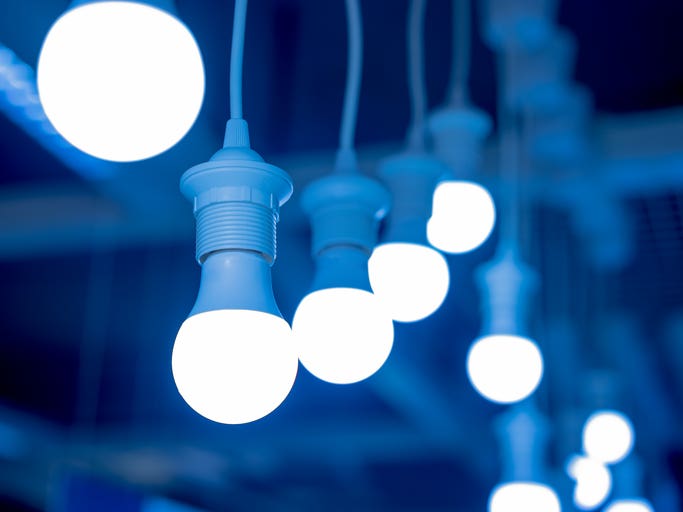A Guide to LEDs
You can shop our range of LED lights here or call the team on 0113 8876270 for more information.
Everyone's heard of LEDs but how many times have you stopped to think about what an LED light actually is and what makes it different from other kinds of lights?.
What does LED stand for?
LED stands for light emitting diode. A diode is a semiconductor device with two terminals which only allows the flow of electricity in one direction. LEDs were first used as a component in electronic devices in 1962.

How do LEDs work?
LEDs work by taking advantage of the fact that atoms can release light as a form of energy. Light is released in the form of photons and photons are released as the result of moving electrons. Electrons orbit around an atom and when the drop from a higher orbit to a lower orbit for whatever reason, they release energy, and this energy is photons. In LEDs, the bigger the drop the higher the energy of the photon; higher energy means higher light frequency. So LEDs can be different colours because we can control how big the electron drop is thereby changing an LED from green to red let's say. The material the diode is made up of dictates whether it will emit light and the colour of the light.
How have they been used previously?
Originally LEDs were used in electronic devices as indicator lamps replacing incandescent and neon lamps. At first LEDs were reserved for use in expensive laboratory and electronics test equipment because they were extremely costly to make. Up until 1968 they cost about $200 per unit so had little practical use. It wasn't until organisations started mass-producing LEDs using gallium arsenide phosphide that they could be marketed on a mass scale. By the 1970s LEDs could be found in all sorts of appliances like TVs, radios, watches, and telephones. They were famously used in seven-segment displays as pictured above. It was until as late as 1994 that blue and white LEDs were introduced.
What is the future of LEDs?
LEDs have developed significantly since their inception and now offer a lot of advantages over other types of lighting. LED lights can easily rival the traditional halogen light or the CFL energy-saving light offering a eco-friendly, energy efficient and now affordable alternative to other types of lighting. The price of semiconductor material has decreased significantly since the turn of the century meaning that LEDs could become our primary lighting technology. Indeed it has been estimated that by 2015 we will be ready to turn to the LED bulb as the go-to lighting fixture in domestic and commercial environments. In a few years' time you're likely to see our friend the LED in a lot more places.
To upgrade the lighting in your home or commercial space to LEDs, check out our extensive range here or call 0113 8876270. You can find out more about the evolution of LEDs by reading our advice section A Look Back at the History of LEDs
Published 2012/11/16
